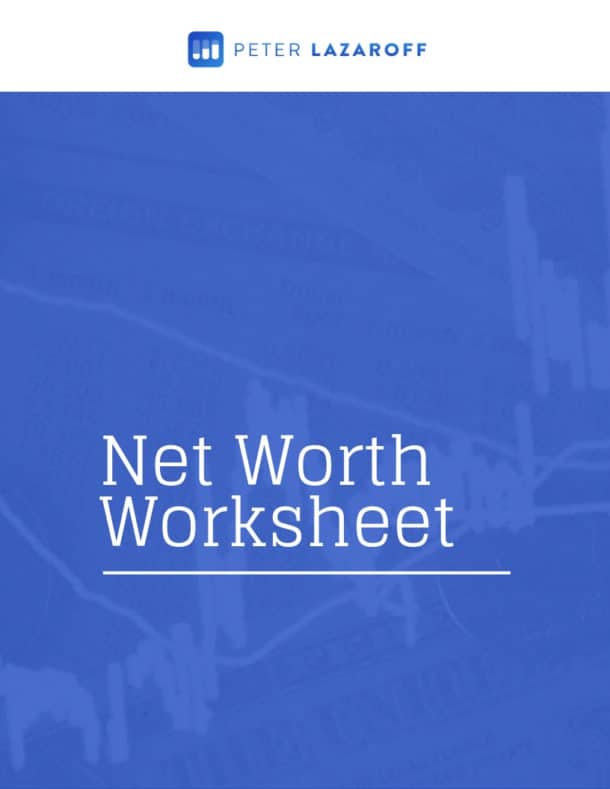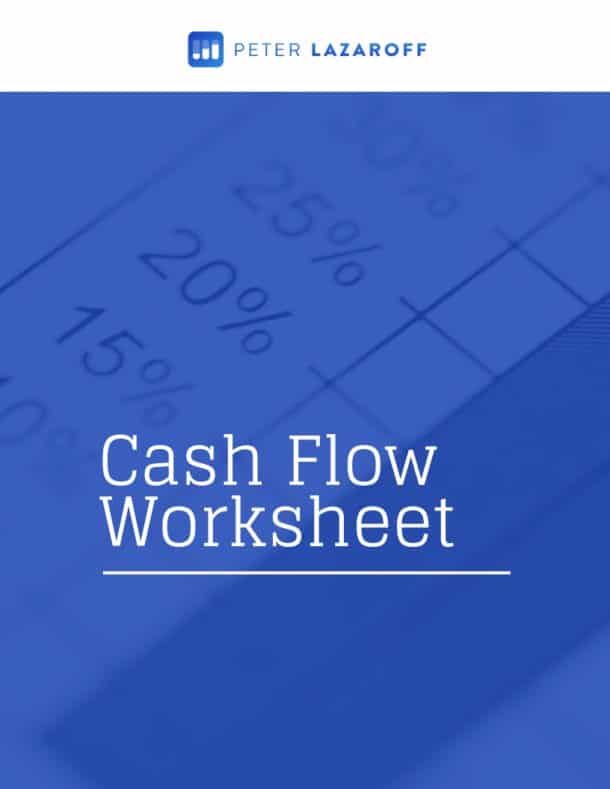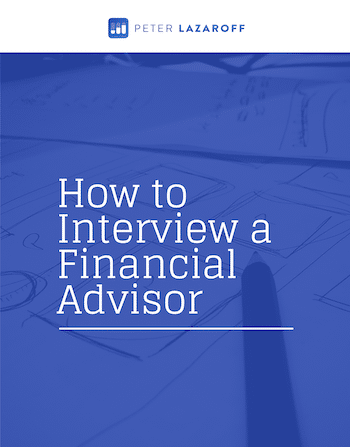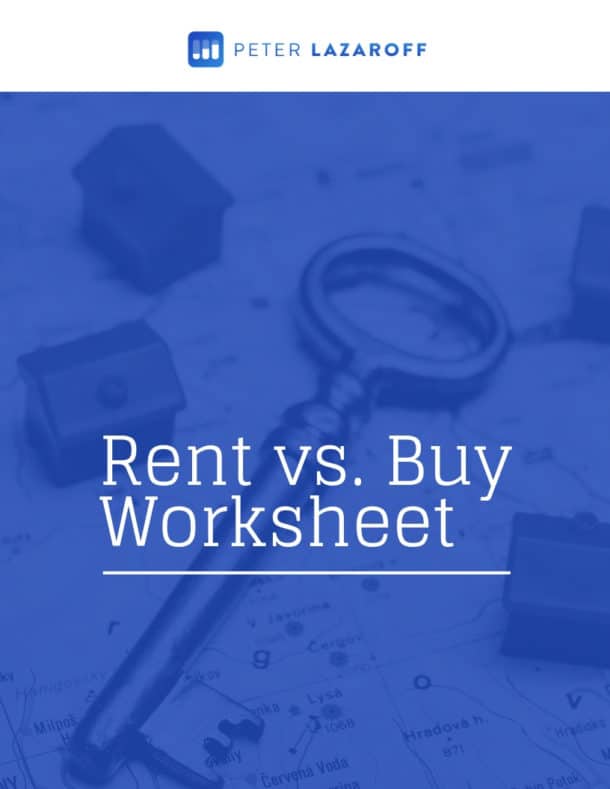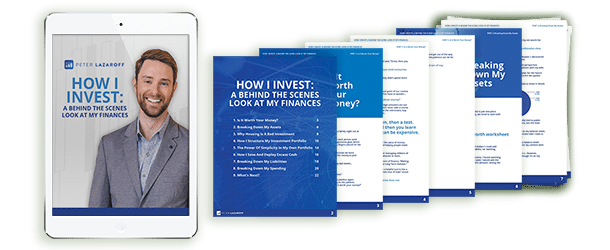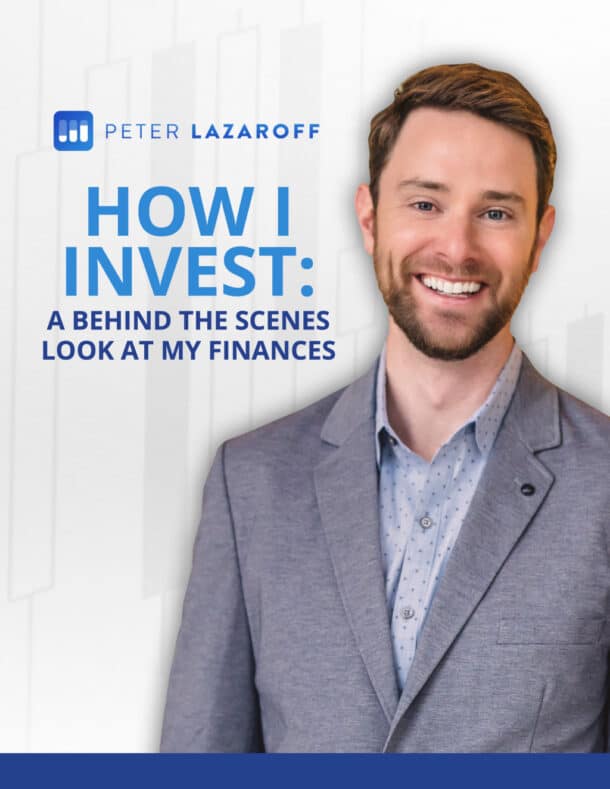Watch Now
Listen Now
In this special episode of The Long Term Investor, I sit down with Dimensional Fund Advisors co-founder David Booth to discuss tuning out the noise, the science behind investing, the origins of index funds, and why human ingenuity drives long-term returns.
David shares stories from his early career, including how selling shoes shaped his business philosophy, what it was like studying under Nobel laureates at the University of Chicago, and how the shift from storytelling to evidence-based investing changed the industry forever. We also discuss the academic breakthroughs that led to passive investing, factor investing, and the rise of Dimensional Fund Advisors.
Plus, David explains why trying to outguess the market is a losing game, the biggest barrier to adopting evidence-based investing, and the role human resilience plays in financial markets.
If you’ve ever wondered why markets work the way they do—and why so many investors still resist the science of investing—this episode is a must-listen.
📺 Watch the documentary Tune Out the Noise
Sign up for my newsletter so you can easily reply to my emails with your thoughts or questions for the podcast:
From Selling Shoes to the Science of Investing (02:00)
Before David Booth became a pioneer in evidence-based investing, he learned a fundamental lesson about business and human behavior while selling shoes on commission. This early job wasn’t just a way to make money—it shaped his entire philosophy on markets, investing, and trust.
As a commissioned salesman in the mid-1960s, Booth faced a clear trade-off: push sales at all costs to maximize his paycheck or take an honest, client-focused approach that might cost him a sale in the short term but build lasting customer relationships. He chose the latter. Instead of telling customers what they wanted to hear just to close a sale, he gave them straightforward, honest feedback. If a shoe didn’t look right or wasn’t the best fit, he told them.
To his surprise, this honesty didn’t hurt his sales—it strengthened them. Customers returned, trusting that he had their best interests in mind. This experience planted the seed for how Booth would later approach investing. He saw a parallel between shoe sales and financial markets: in both cases, transparency and a focus on long-term relationships led to better outcomes.
Years later, when he entered the finance world, Booth realized that many young professionals believed success in investing required bending the truth, making exaggerated claims, or playing on emotions to sell financial products. His experience in retail taught him otherwise. Just as customers valued sincerity when buying shoes, investors value honesty and evidence-based decision-making when managing their wealth.
The University of Chicago & The Birth of Evidence-Based Investing (04:08)
David Booth’s introduction to finance was anything but conventional. Growing up in a small town in Kansas, investing was not a topic of conversation in his household. That changed when he arrived at the University of Chicago, stepping into an academic environment that was reshaping the way the world thought about markets.
His first finance course, taught by Eugene Fama, would prove to be pivotal. Fama, who would later win a Nobel Prize, introduced Booth to the idea that markets are highly efficient, meaning stock prices quickly reflect all available information. This perspective, now known as the Efficient Market Hypothesis (EMH), resonated immediately with Booth, even though he didn’t yet grasp how revolutionary it was.
At the time, investing was still largely an art rather than a science. Professional money managers relied on intuition, storytelling, and the belief that they could uncover mispriced stocks. But a major shift was underway. In 1963, the University of Chicago’s Center for Research in Security Prices (CRSP) published the first comprehensive dataset on historical stock returns. For the first time, researchers could test investment theories using real data instead of speculation.
The findings were a wake-up call: despite their expertise and resources, most professional money managers failed to consistently outperform the market. The implications were profound. Investing wasn’t about spotting hidden opportunities—it was about understanding how markets set prices and using that knowledge to build better portfolios.
This research laid the foundation for evidence-based investing, an approach rooted in data, empirical analysis, and market efficiency. Instead of relying on stock-picking and speculation, it emphasized broad diversification, low costs, and a systematic process to capture market returns.
Wall Street’s Traditional Approach vs. The Academic Revolution (06:15)
Before this academic revolution, investing was built on the assumption that skilled professionals could consistently outguess the market. Wall Street’s business model was based on the idea that expert fund managers could uncover mispriced stocks, predict market trends, and deliver superior returns. Investors were encouraged to seek out these so-called experts, paying high fees for their insights and trading strategies.
But there was a fundamental flaw in this approach: it lacked empirical support. Stories of legendary investors who “beat the market” captivated the public, but there was no reliable evidence showing that these successes were anything more than luck. The investment industry thrived on anecdotes, but without rigorous data, it was impossible to prove whether active management actually worked.
The breakthrough came when researchers at the University of Chicago developed the first large-scale, bias-free database of stock returns. With this data, they could finally analyze investment performance objectively. The results were striking: most professional fund managers did not consistently outperform the market after fees and expenses were accounted for.
At the heart of this research was Eugene Fama’s Efficient Market Hypothesis, which argued that market prices reflect all available information. If true, this meant that attempting to pick undervalued stocks or time the market was futile—stock prices already incorporated all known information, leaving little room for investors to gain an edge.
Wall Street resisted these findings. If markets were truly efficient, what was the value of high-priced money managers? If stock-picking didn’t work, why should investors pay premium fees for actively managed funds? The financial industry had built an empire on the idea that expertise could generate superior returns, but the data suggested otherwise.
This research didn’t just expose the flaws of active management; it paved the way for a new approach to investing—one grounded in data rather than speculation. Instead of chasing market-beating returns through forecasting and stock selection, investors could achieve better outcomes by focusing on diversification, cost efficiency, and systematic exposure to proven factors like size and value.
This shift set the stage for innovations like index investing and factor-based strategies—approaches that prioritized disciplined, rules-based investing over short-term guesswork. It also led to the creation of firms like Dimensional Fund Advisors, where Booth and his colleagues took these academic insights and applied them to real-world investment strategies.
For Booth, this wasn’t just a theoretical shift; it was a complete rethinking of how investors could achieve long-term success. The traditional Wall Street approach, built on intuition and speculation, was being replaced by a scientific, process-driven method—one that continues to challenge conventional wisdom to this day.
The Hidden Order in Markets—And Why Human Ingenuity Drives Returns (14:00)
To many investors, the stock market appears chaotic and unpredictable. Prices fluctuate rapidly, headlines create panic, and short-term movements often seem random. However, beneath this surface-level turbulence lies a deeper, more structured order—one that systematically rewards patient, long-term investors.
Markets function as information-processing machines. Every day, millions of investors—ranging from individual traders to institutional giants—evaluate companies, industries, and macroeconomic conditions, incorporating new information into stock prices in real time. The result is a highly efficient pricing mechanism where securities are generally valued fairly based on all available knowledge.
But what drives returns over the long run? Human ingenuity.
Booth argues that the engine behind market growth is the relentless drive of businesses and individuals to innovate, adapt, and solve problems. Companies continuously seek to improve efficiency, create better products, and expand into new markets. When unexpected challenges arise—economic downturns, technological disruptions, geopolitical crises—businesses don’t simply fold; they find solutions. This resilience fuels long-term economic progress and, by extension, stock market returns.
This perspective helps explain why, despite recessions, crises, and market crashes, the stock market has historically delivered strong long-term returns. Investing isn’t about guessing the next big winner or avoiding downturns—it’s about participating in the collective progress of human enterprise. By maintaining a disciplined, diversified approach, investors can benefit from the market’s ability to turn uncertainty into opportunity.
The First Index Funds & The Rise of Dimensional (16:30)
The idea of index investing—owning a broadly diversified portfolio that simply tracks the market—was a radical departure from the traditional stock-picking approach that dominated Wall Street for decades. When the first index funds were introduced in the 1970s, they were met with skepticism, if not outright hostility, from the investment industry.
At the time, the prevailing belief was that skilled money managers could consistently outperform the market. The notion that investors could achieve better results by doing nothing more than mirroring a broad index like the S&P 500 was seen as absurd. Critics labeled indexing as “settling for average,” arguing that investors should strive for superior returns by picking the right stocks at the right time.
Yet the data told a different story. Early research, including studies from the University of Chicago, revealed that most professional fund managers failed to beat the market after accounting for fees and trading costs. Even when some managers did outperform, their success was inconsistent—what worked one year often failed the next. This research laid the foundation for a major shift in investing philosophy.
Wells Fargo developed some of the first index funds for institutional investors in the early 1970s. At the time, indexing was still in its infancy, but its potential was undeniable. Investors no longer had to rely on high-cost, actively managed funds that often underperformed—they could now access the returns of the entire market in a low-cost, systematic way.
Despite the success of early index funds, Booth saw an opportunity to take these ideas even further. In 1981, he co-founded Dimensional Fund Advisors (DFA), a firm dedicated to applying academic research to real-world investing. While index funds had proven that markets were efficient, Booth and his team recognized that certain factors—such as company size and valuation—appeared to influence long-term returns.
Their breakthrough was in small-cap stocks. At the time, institutional investors largely ignored small companies because they were harder to trade and perceived as riskier. However, research suggested that over long periods, small-cap stocks tended to deliver higher returns than their larger counterparts. Booth and his team saw an opportunity to design a rules-based, systematic approach to investing in small caps—one that wasn’t reliant on stock-picking but still captured the benefits of market efficiency.
This insight became the foundation of Dimensional’s first investment strategy. Unlike traditional active managers, who tried to identify individual winners and losers, Dimensional took a structured, evidence-based approach—capturing known sources of higher expected returns while minimizing unnecessary costs and risks.
Over time, Dimensional expanded its strategies, incorporating new research on value stocks, profitability, and other factors that drive returns. Today, the firm manages hundreds of billions of dollars for investors worldwide, all while staying true to its founding principle: Markets work, and a disciplined investment process built on academic research leads to better outcomes.
What was once a niche academic idea is now widely accepted: Trying to outguess the market is a losing game, and long-term success comes from embracing a systematic, data-driven investment strategy.
Active vs. Passive? Why That’s the Wrong Debate (24:50)
For decades, the investment industry has framed the conversation around two opposing strategies: active investing, where fund managers try to beat the market, and passive investing, where investors simply track an index. The debate between these approaches has been ongoing, with active managers arguing for the benefits of stock selection and market timing, while proponents of passive investing highlight the long-term advantages of low-cost index funds.
But according to David Booth, this debate is missing the point entirely. Instead of asking whether investing should be active or passive, the real question is whether an investment strategy is based on sound evidence and disciplined execution.
Index funds, for example, are often considered the gold standard of passive investing. However, even an index fund is actively managed to some extent—decisions are made about which stocks to include and when to rebalance. Meanwhile, firms like Dimensional apply a systematic, research-driven approach that actively adjusts portfolios based on academic insights but does not engage in traditional stock picking or market timing.
Booth argues that the key to successful investing isn’t about choosing a side in the active vs. passive debate—it’s about understanding how markets work and structuring a portfolio that captures known sources of return while keeping costs and inefficiencies low. Whether a strategy is called active or passive is irrelevant; what matters is whether it is grounded in robust data, implemented effectively, and aligned with an investor’s long-term financial goals.
Separating Signal from Noise—How Investors Get Distracted (28:00)
One of the biggest challenges investors face is distinguishing between meaningful financial insights and the endless noise of daily market movements. Financial media, economic forecasts, and stock market speculation create a constant stream of information that can lead investors to make emotionally driven decisions rather than sticking to a disciplined investment strategy.
David Booth emphasizes that identifying true investment signals is far more difficult than most people assume. Even after decades of research, top academics continue to debate which patterns in financial data are genuine indicators of long-term returns and which are simply random fluctuations. This is why so many attempts to “beat the market” fail—what appears to be a profitable pattern is often just an illusion.
Instead of chasing trends or reacting to short-term market movements, Booth advocates for focusing on strategies with strong theoretical and empirical support. This means investing based on principles backed by decades of academic research—such as the benefits of diversification, systematic exposure to risk factors, and cost efficiency.
The bottom line? Markets are noisy, but investors don’t have to be. Tuning out distractions and maintaining a long-term perspective is essential to investment success.
Why More Investors Haven’t Adopted the Science of Investing (29:50)
Despite decades of research supporting evidence-based investing, the majority of investors still rely on outdated strategies rooted in stock picking, market timing, and speculation. David Booth sees this as a communication problem, not a science problem. The data is clear: markets are efficient, active management underperforms after costs, and a systematic approach to investing provides better long-term results. Yet, the financial industry continues to promote narratives that encourage speculation rather than discipline.
One reason for this resistance is human nature. People instinctively look for patterns and want to believe they can predict the future. The idea that professional investors with vast resources can outguess the market is deeply ingrained, even though research consistently shows otherwise. Additionally, the financial media thrives on sensationalism, amplifying short-term market movements and reinforcing the illusion that constant action is necessary for investment success.
Booth argues that shifting investor mindsets requires a new way of framing the conversation. Instead of focusing on complex theories like the Fama-French model, investors need relatable, real-world explanations of why embracing uncertainty and sticking to a disciplined strategy leads to better outcomes. Until this message is widely understood, many will continue chasing short-term gains at the expense of long-term wealth.
David’s Advice to His Younger Self (33:00)
Looking back on his career, David Booth offers a simple yet powerful lesson to his younger self: master the science, then focus on communication. While studying finance at the University of Chicago, Booth immersed himself in the latest research, learning from some of the greatest minds in the field. He believes that those early years of deep study were invaluable, as once you leave an academic setting, staying connected to the cutting edge of financial theory becomes far more difficult.
But knowledge alone isn’t enough. Booth emphasizes that the ability to communicate complex ideas effectively is just as important as understanding them. Investors don’t need to grasp every nuance of financial models; they need guidance on how to apply them in a way that improves their lives. His advice? Learn the research, then spend just as much time figuring out how to explain it in a way that truly resonates with people.
Resources:
- 🎬 Watch the documentary Tune Out the Noise
- 📖 Learn more about Dimensional Fund Advisors
- Check out my Financial Assessment
The Long Term Investor audio is edited by the team at The Podcast Consultant
Submit Your Question For the Podcast
Do you have a financial or investing question you want answered? Submit your question through the “Ask Me Anything” form at the bottom of my podcast page.
Support the Show
Thank you for being a listener to The Long Term Investor Podcast. If you’d like to help spread the word and help other listeners find the show, please click here to leave a review.
I read every single one and appreciate you taking the time to let me know what you think.
Free Financial Assessment
Do you want to make smart decisions with your money? Discover your biggest opportunities in just a few questions with my Financial Wellness Assessment.











